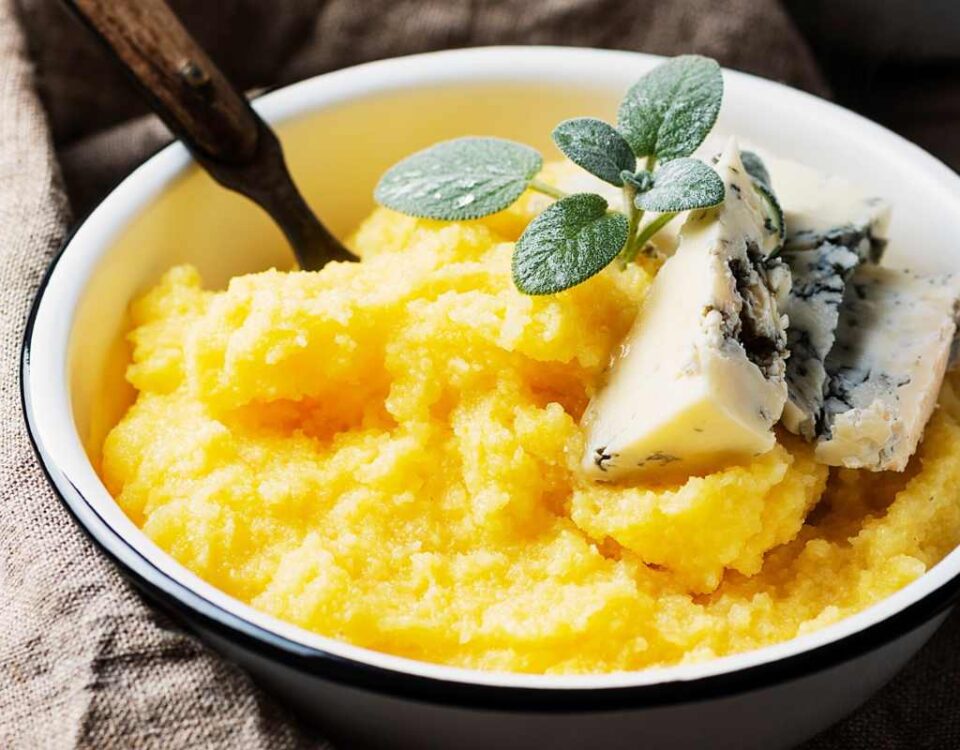
Chicken Piccata: A Classic Italian Dish with a Tangy Twist

Zabaglione: A Classic Italian Dessert
Orecchiette: A Classic Pasta from Southern Italy
Orecchiette, a distinctive pasta shape originating from the Puglia region in southern Italy, is a beloved staple of Italian cuisine. Named after its characteristic ear-like shape (the word “orecchiette” comes from “orecchio,” meaning “ear” in Italian), this pasta is known for its ability to hold sauces beautifully, making it a versatile base for many traditional Italian dishes. In this article, we’ll explore the history of orecchiette, discuss essential ingredients, provide a step-by-step recipe, and share tips to ensure your orecchiette dishes are as authentic and delicious as possible.
The History of Orecchiette
Orecchiette has its roots in the region of Puglia (Apulia), located in the southeastern part of Italy, often referred to as the “heel” of Italy’s boot. The origins of this pasta shape are believed to date back to between the 12th and 13th centuries. Its unique shape, which resembles small ears, was designed to hold chunky sauces and vegetables, making it a practical and versatile pasta for a region known for its agricultural bounty.
Traditionally, orecchiette was made by hand, with each piece formed individually using the thumb to press and shape the dough into the small, concave discs. This method is still practiced today, especially in Puglia, where handmade orecchiette is a point of pride and an essential part of the region’s culinary identity.
Essential Ingredients for Orecchiette
To make traditional orecchiette, you will need the following ingredients:
For the Pasta Dough
- 2 cups semolina flour (or a mix of semolina and all-purpose flour)
- 3/4 cup warm water
- A pinch of salt
For the Classic Sauce (Orecchiette with Broccoli Rabe)
- 1 bunch broccoli rabe (rapini), washed and chopped
- 4 tablespoons extra-virgin olive oil
- 3 cloves garlic, minced
- 1/2 teaspoon red pepper flakes (optional, for heat)
- 4-6 anchovy fillets (optional, for added umami)
- Salt and freshly ground black pepper, to taste
- Grated Pecorino Romano cheese, for serving
Step-by-Step Recipe for Orecchiette
Step 1: Make the Pasta Dough
- Combine Ingredients: On a clean work surface or in a large mixing bowl, combine the semolina flour and a pinch of salt. Make a well in the center of the flour.
- Add Water: Gradually add the warm water into the well, using your fingers or a fork to slowly incorporate the flour into the water, forming a dough.
- Knead the Dough: Once the dough begins to come together, knead it for about 8-10 minutes until it becomes smooth and elastic. If the dough feels too dry, add a little more water; if it’s too sticky, add a bit more flour.
- Rest the Dough: Wrap the dough in plastic wrap and let it rest at room temperature for at least 30 minutes. This resting period allows the gluten to relax, making it easier to shape the pasta.
Step 2: Shape the Orecchiette
- Roll the Dough: After resting, cut the dough into small, manageable portions. Roll each portion into a long, thin rope, about 1/2 inch in diameter.
- Cut the Dough: Cut the rope into small pieces, each about the size of a chickpea (roughly 1/2 inch).
- Shape the Orecchiette: Using your thumb or the flat side of a knife, press each piece of dough against the work surface, then pull it towards you to create a concave shape. The dough should curl slightly as you pull, resembling a small ear. Continue shaping until all the dough is used.
- Dry the Pasta: Place the shaped orecchiette on a lightly floured surface and allow them to dry for about 30 minutes before cooking. This helps the pasta hold its shape during cooking.
Step 3: Cook the Orecchiette
- Boil Water: Bring a large pot of salted water to a boil.
- Cook the Pasta: Add the orecchiette to the boiling water and cook for about 8-10 minutes, or until the pasta is al dente. Fresh orecchiette cooks more quickly than dried, so keep an eye on it to avoid overcooking.
- Drain the Pasta: Reserve a cup of the pasta cooking water, then drain the orecchiette and set aside.
Step 4: Prepare the Sauce
- Cook Broccoli Rabe: In a large skillet, heat 2 tablespoons of olive oil over medium heat. Add the chopped broccoli rabe and sauté for about 5 minutes, until it begins to soften. Season with salt and pepper.
- Add Garlic and Anchovies: Add the minced garlic, red pepper flakes (if using), and anchovy fillets to the skillet. Sauté for another 2-3 minutes, breaking down the anchovies with the back of a spoon until they dissolve into the sauce.
- Combine with Pasta: Add the cooked orecchiette to the skillet and toss to combine. If the mixture seems too dry, add a bit of the reserved pasta cooking water to loosen the sauce.
Step 5: Serve the Orecchiette
- Finish with Olive Oil: Drizzle the remaining olive oil over the pasta and toss to coat evenly.
- Plate and Garnish: Serve the orecchiette hot, garnished with freshly grated Pecorino Romano cheese and a sprinkle of black pepper.
Orecchiette: A Classic Pasta from Southern Italy
Tips for Making the Perfect Orecchiette
- Use Semolina Flour: Semolina flour is key to achieving the right texture for orecchiette. It gives the pasta its distinctive chewiness and helps it hold up well to sauces.
- Practice Makes Perfect: Shaping orecchiette takes practice, so don’t be discouraged if your first batch isn’t perfect. With time, you’ll develop a feel for the dough and the technique.
- Don’t Overcook the Pasta: Fresh orecchiette cooks quickly, so keep a close eye on it to ensure it remains al dente. Overcooked orecchiette can become mushy and lose its characteristic bite.
- Customize the Sauce: While broccoli rabe is traditional, orecchiette pairs well with many other sauces, including tomato-based sauces, pesto, or a simple garlic and oil sauce.
Variations of Orecchiette
Orecchiette with Sausage and Broccoli Rabe
Add Italian sausage to the traditional recipe for a heartier dish. Brown the sausage in the skillet before adding the broccoli rabe, and proceed with the recipe as usual.
Orecchiette with Tomato and Basil
For a lighter, summer dish, toss cooked orecchiette with fresh cherry tomatoes, basil, garlic, and a drizzle of olive oil. Finish with a sprinkle of Parmesan cheese.
Orecchiette with Pesto
Toss orecchiette with a vibrant basil pesto for a quick and flavorful meal. Add some sautéed cherry tomatoes or roasted vegetables for added texture and color.
Orecchiette with Creamy Mushroom Sauce
For a rich and earthy dish, sauté a mix of mushrooms in butter and garlic, then add cream and Parmesan to create a luxurious sauce that pairs perfectly with orecchiette.
Serving Suggestions
Orecchiette is a versatile pasta that can be served with a variety of side dishes and accompaniments. Here are a few ideas:
- Green Salad: A simple green salad with a lemon vinaigrette is a refreshing contrast to the richness of orecchiette dishes.
- Garlic Bread: Serve with garlic bread or bruschetta for a satisfying Italian meal.
- Roasted Vegetables: Pair orecchiette with roasted vegetables, such as zucchini, eggplant, or bell peppers, for a complete and nutritious meal.
- Wine Pairing: A crisp white wine, such as Pinot Grigio or Vermentino, complements the flavors of orecchiette, especially when served with a lighter sauce.
Nutritional Information
Orecchiette is a relatively light pasta, but the nutritional content can vary depending on the sauce and additions. Here’s an approximate nutritional breakdown per serving (based on a 4-serving recipe with a traditional broccoli rabe sauce):
- Calories: 400
- Protein: 12g
- Fat: 14g
- Carbohydrates: 54g
- Fiber: 5g
- Sodium: 500mg
Conclusion
Orecchiette is a classic pasta that embodies the culinary traditions of southern Italy. Its unique shape and versatility make it a favorite for both home cooks and professional chefs. By following this step-by-step recipe and using high-quality ingredients, you can create delicious and authentic orecchiette dishes in your own kitchen.
Whether you stick to the traditional recipe or experiment with different sauces and ingredients, the key to great orecchiette lies in the quality of the pasta and the balance of flavors in the dish. Enjoy making and savoring this timeless Italian pasta, and don’t forget to explore more international recipes and cooking tips on our website. Buon appetito!


